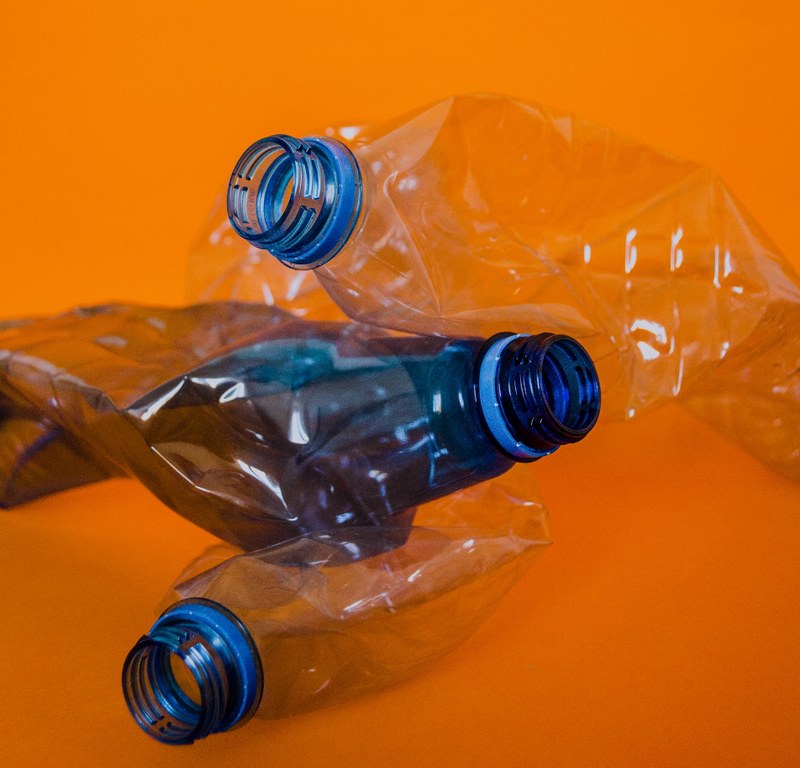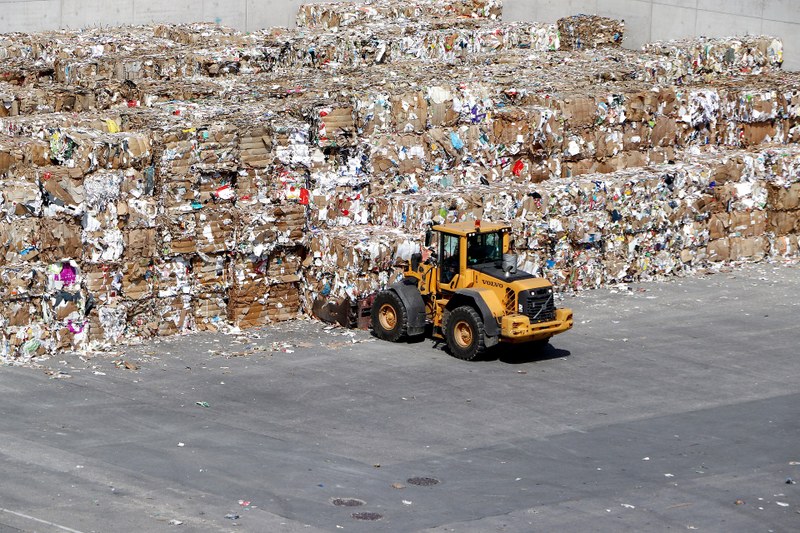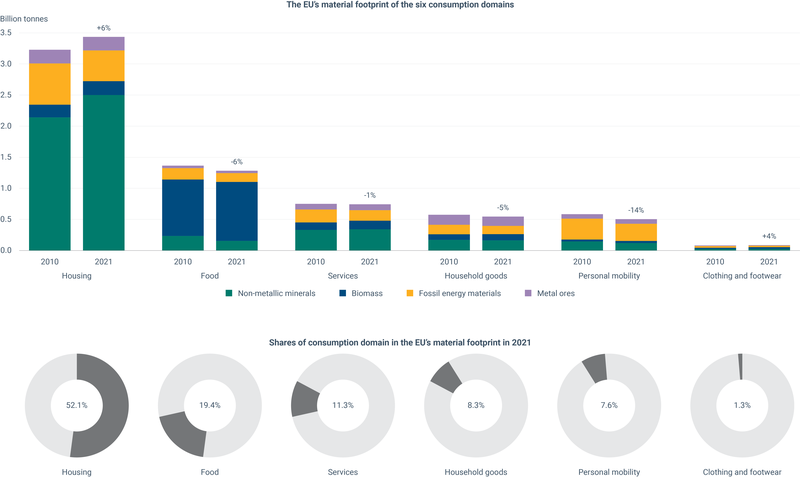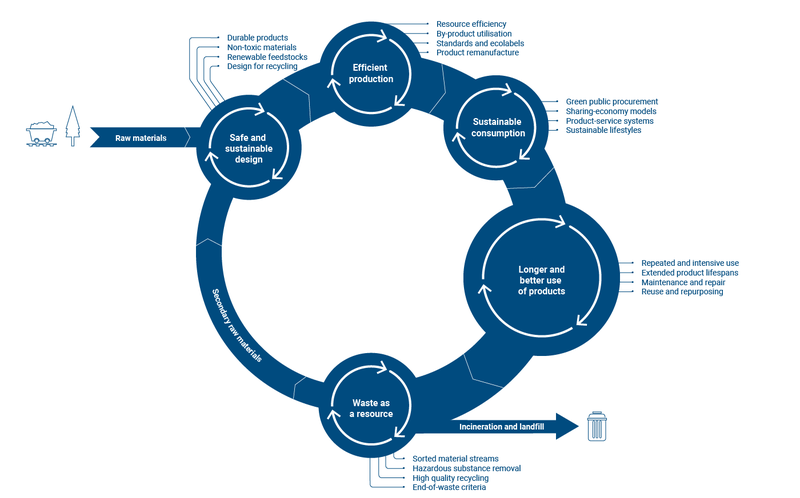All official European Union website addresses are in the europa.eu domain.
See all EU institutions and bodiesOur production and consumption systems rely on raw materials that are, to a large extent, not reused or recycled. This linear model creates endless waste, continuous demand for virgin raw materials and unsustainable consumption patterns. The solution is to move to a circular economy where products and materials can be used longer and made into new products after use.
We need fibres, minerals, energy, water, and other resources to produce almost all the goods and services we consume. In the EU, we are consuming far more than we should and not reusing or recycling nearly as much as is needed for a sustainable future.
Instead of consuming products made for fast and single-use and made from new non-recycled materials and then throwing them away, we should embrace circular economic systems that turn waste into value.
Moving to a circular economy means moving away from linear production and consumption models, where things are used for a short time and thrown away after use, toward a more circular process. Circularity can include practices like refurbishing, repurposing, re-distributing and other strategies that extend the lifetime of products.
Circular models allow products and materials to be used longer and made into new products after use. That means less waste and less environmental impact. To ease the transition, the European Commission’s Circular Economy Action Plan offers an overall framework for initiatives that foster a circular model, including better-designed and more sustainable products.
In recent years, there has been some progress towards circularity. For example, Europe has increased its recycling rates and promoted sharing economy models like car sharing. Overall, to achieve a truly circular economy we must decrease our need for new raw materials in everything that we produce and consume. And without a circular economy, Europe cannot achieve sustainability.

Europe’s circular economy in facts and figures
With a circularity rate of 11.8% in 2023, Europe consumes a higher proportion of recycled materials than other world regions, although improvements have been limited in recent years. Accelerating the transition to a circular economy has become a policy priority.
This briefing offers a practical definition of recycling quality as an approach to improving waste management operations and increasing circularity in Europe. It is published in support of the EU’s circular economy action plan.
Now is the time to accelerate the shift to a more circular Europe
With a circularity rate of 11.5% in 2022, Europe consumes a higher proportion of recycled materials than other world regions. However, progress in the EU has been slow and we are still far from the ambition to double the Union’s circularity rate by 2030.
Assessing progress towards current circular ambitions, the EEA report states that there is a low or moderate likelihood for them to be achieved in the coming years.
The report explains, however, that many circular economy policies are still relatively new and some have not yet been fully put in place at national level.


Measuring the quality of recycling
EEA briefing ‘Measuring the quality of recycling’ looks at how to increase recycling volumes and improve recycling quality by optimising material loops.
According to the briefing, measures to increase recycling quality include avoiding mixed collection systems, investing in effective sorting technologies and directing recyclables into new products that also have a high recycling potential. These are key measures to advance circular economy while maximising the environmental benefits during the entire recycling value chain.
A case study for PET bottles shows that the highest quality is achieved in a closed-loop system where the material is collected through deposit-refund schemes and recycled into bottles again.
Do Europe's markets for recycled raw materials work?
The EEA report ’Investigating Europe′s secondary raw material markets’ presents a set of criteria to analyse the functioning of markets for secondary, recycled raw materials. Improving markets for recycled raw materials is key to delivering a circular economy in the EU, reducing the need to extract natural resources and avoiding the associated environmental impacts.
Europe’s ambitions for a circular economy require the timely provision of good-quality recycled raw materials to manufacturers. However, according to our report, from the eight most common recyclables, only aluminium, paper and glass have well-functioning secondary markets. Lack of standardisation and competition with new materials are among the challenges for other markets, such as wood and textiles.

Is Europe making progress towards a circular economy?
Can circular economy help reduce greenhouse gas emissions?
The circular economy is an important approach to reduce greenhouse gas emissions through more efficient material flows. However, the inclusion of circular economy actions are underrepresented in national climate policies and measures due to their cross-sectoral nature and the challenge of quantifying impacts.
Some form of circular economy policies and measures are included in 6% of the climate policies reported by European countries (with a strong focus on waste). Impacts on emissions are rarely quantified.
From data to decisions: material footprints in European policy making
Housing and food are particular hotspots for resource consumption, accounting for 72% of the EU’s material footprint and requiring the highest amount of material per Euro spent, according to the EEA briefing 'From data to decisions: material footprints in European policy making', which highlights how existing Eurostat data on our European material footprint can inform policymakers in formulating new measures to reduce our economic footprint on the environment.


